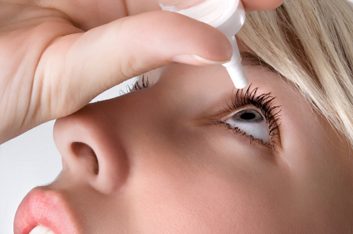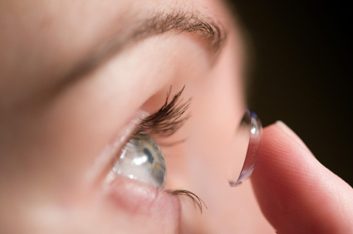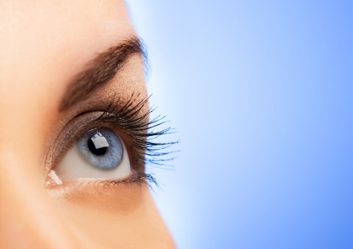
1. If you thought eye drops were just for dry eyes…
We can bring you up to speed. Now there’s a range of over-the-counter treatments that can soothe irritation, diminish redness, ward off allergy-related itchiness and even fight minor infections.
Which over-the-counter formulas should you consider? We asked Bellan, Marr and Lori Bonertz, a pharmacist at Fort St. John Pharmacy and Wellness Centre in Fort St. John, B.C., for their advice.

2. To moisturize
Examples: Bausch & Lomb Moisture Eyes, GenTeal GelDrops, Systane Ultra Lubricant Eye Drops, TheraTears Lubricant Eye Drops and Visine Enduring Moisture
How they work: Also known as artificial tears, moisturizing drops are composed of water, chemicals and salts, a combination that mimics the composition of normal human tears, explains Bellan. Look for hypromellose, carboxymethylcellulose sodium, polyethylene glycol and propylene glycol on the labels. These are the common lubricating ingredients, and are what make these products different from saline solutions. If you require multiple drops throughout the day, consider gel options, such as GenTeal, which are slightly thicker and longer-lasting than liquids (although they may cause some temporary blurring).
Need to know: “These products can be applied as needed,” says Bonertz. But see your doctor if you use them more than four times a day. Chronic inflammation around the eyelids is a common culprit for dry eyes, so an ophthalmologist may recommend prescription drops to resolve your symptoms.

3. To re-wet contact lenses
Examples: Aquify Long-Lasting Comfort Drops, Refresh Contacts and Visine Contact Lens
How they work: Products made specifically for contact lens wearers can be applied directly to the eyes without the need to remove lenses first. “These products don’t contain preservatives harsh enough for the lenses to absorb,” says Marr (absorption could eventually create problems with the cornea). Refresh and Visine include the same active ingredients as some regular formulations (carboxymethylcellulose sodium in Refresh and hypromellose in Visine), while Aquify has sodium hyaluronate, which slowly releases water molecules. ‘
Need to know: Bonertz recommends sticking with drops from the same product line that you use for cleaning and storing your lenses. Use these drops as often as necessary, but see a doctor if you have persistent dryness. And always double-check labels to make sure a product states it’s safe for contact lenses before you use it.

4. To reduce redness
Examples: Visine Original, Alcon Naphcon Forte, Clear Eyes Eye Drops and Refresh Redness Relief
How they work: Tetrahydrozoline hydrochloride (found in Visine) and naphazoline hydrochloride (in Clear Eyes, Refresh and Alcon) are chemical agents called vasoconstrictors, which cause blood vessels to contract, making eyes look whiter.
Need to know: Our experts recommend these drops only for when you need a short-term fix. If you do use them, Bonertz advises taking one or two drops, up to four times per day. “Be aware that when the drug wears off, the blood vessels can have a rebound dilation that can be even more pronounced,” says Bellan.

5. To relieve allergy symptoms
Examples: Clear Eyes Allergy, Alcon Naphcon A Solution, Bausch & Lomb Opcon-A Eye Drops, Claritin Eye Allergy Relief, Life Brand Allergy Eye Drops, Refresh Eye Allergy Relief and Visine Advance Allergy
How they work: Most anti-allergy drops contain either one or two drugs. Vasoconstrictors (the oxymetazoline hydrochloride in Claritin, tetrahydrozoline hydrochloride in Life Brand, and naphazoline hydrochloride in Alcon, Bausch & Lomb, Clear Eyes and Visine) shrink blood vessels to help combat allergy-related redness. Keto¬tifen (found in Refresh) and pheniramine maleate (contained in Alcon, Bausch & Lomb and Visine) are antihistamines. They counter¬act the effects of histamines, chemicals that induce intense itchiness when the immune system reacts to allergens, such as pollen, ragweed, grass or dust.
Need to know: For dosage, follow package directions (which usually recommend one to two drops up to four times per day). However, if you aren’t getting adequate relief, see your doctor for a more powerful prescription-strength version.
